Primary Arms has not stopped in their quest to cover all of the optical bases, and then some. I jumped at the opportunity to test out their recent addition of their GLx 3-18x44mm scope since I have a personal affinity towards rifle scopes that start their magnification range on the lower end. That way the rifle I’ve attached it to can be a do-it-all gun compared to those mounted with no magnification optics and optics that start at the 5th or 6th power. Primary Arms’ new GLx 3-18x seems to tick a lot of boxes when it comes to features, so let’s dive in.
Primary Arms @ AO & TFB
- AO Review: NEW Primary Arms GLx 10x42mm Binocular
- Primary Arms Optics Introduces New SLx HUNTER Rifle Scopes
- New Hunting Products Section Added to Primary Arms Website
- TFB Review: Primary Arms Classic RD-25 Red Dot Sight – Push Button Operation
- US Department of Energy Selects Primary Arms PLx 1-8×24 Scope
PRIMARY ARMS GLX 3-18X44MM SCOPE REVIEW
I’ve mounted a number of Primary Arms’ rifle scopes over the years, so I wasn’t surprised to find that the GLx 3-18x44mm was just as solidly built as I had come to expect. This model is quite robust though, since it features a 34mm main tube, which means that it should have more elevation adjustment range. The elevation and windage turrets add to the robust construction as they are quite pronounced in size and with the aggressive knurling. They also feature locking turrets that can be released by depressing the button on the turret cap for quick adjustments. More on zeroing in a bit.
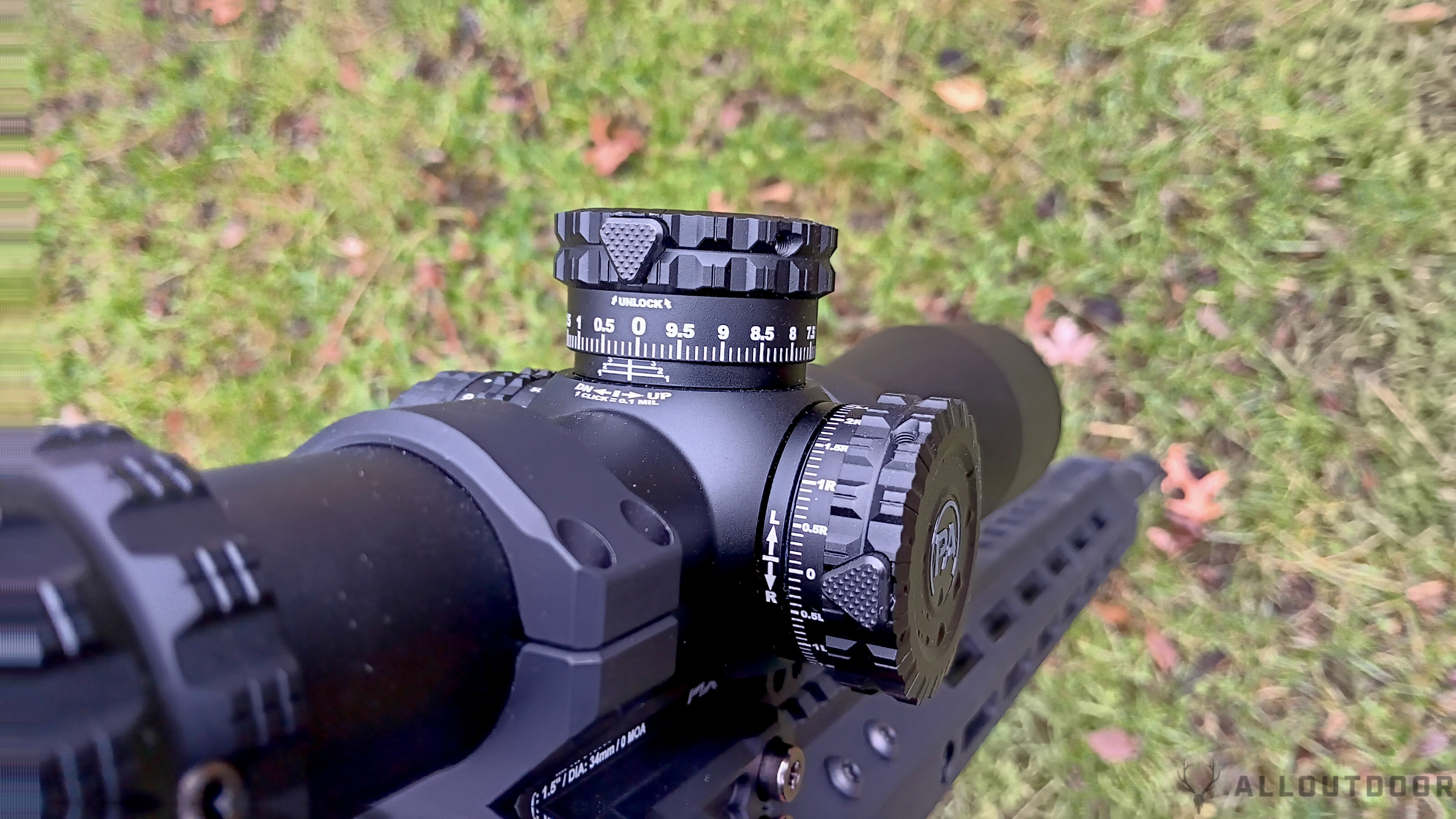
The reticle illumination dial has 10 brightness settings with “off” breaks between each number. I always like that feature so that you can leave the dial in the off position near your most commonly used brightness setting, or leave it off between 1 and 10 to have the extremes covered. The parallax adjustment knob is to the inside of the brightness dial and adjusts from 10 to 1000 yards, then to Infinity.
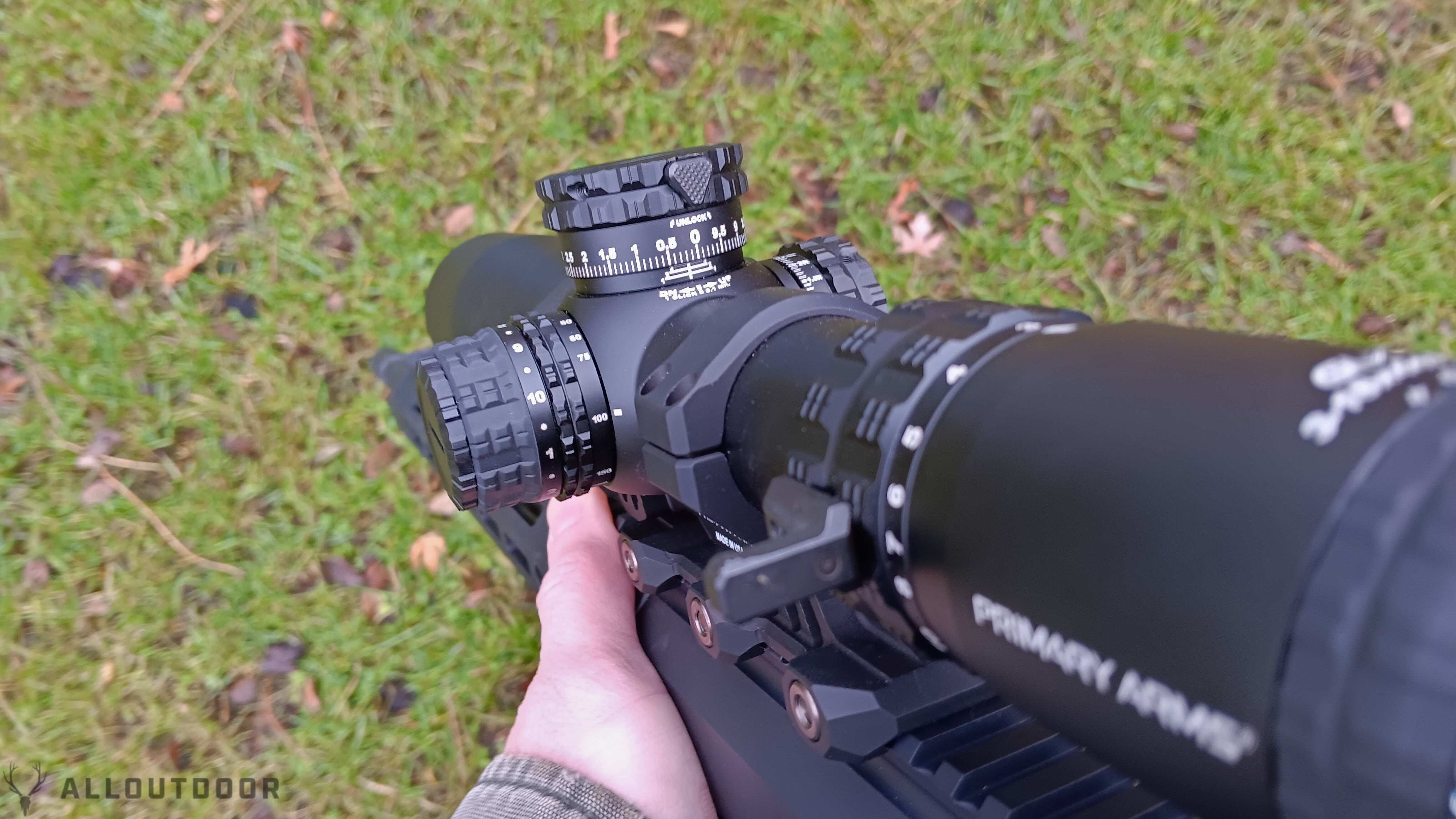
I found the choice of the 44mm objective lens interesting compared to the more common 50mm, so I asked Primary Arms about it. They said that they designed it that way for some extra weight savings, and to be able to mount it closer to the bore (for bolt actions). The one piece PLx 34mm mount is solidly engineered and keeps the traditional height over bore for semi-auto rifles. For this review, I paired the PA GLx 3-18x44mm scope to a Bear Creek Arsenal BC-15 Side Charger upper AR-15 receiver with a 20 inch, cold hammer forged barrel, which is a new offering for them. Check TheFirearmBlog.com for my review on that.
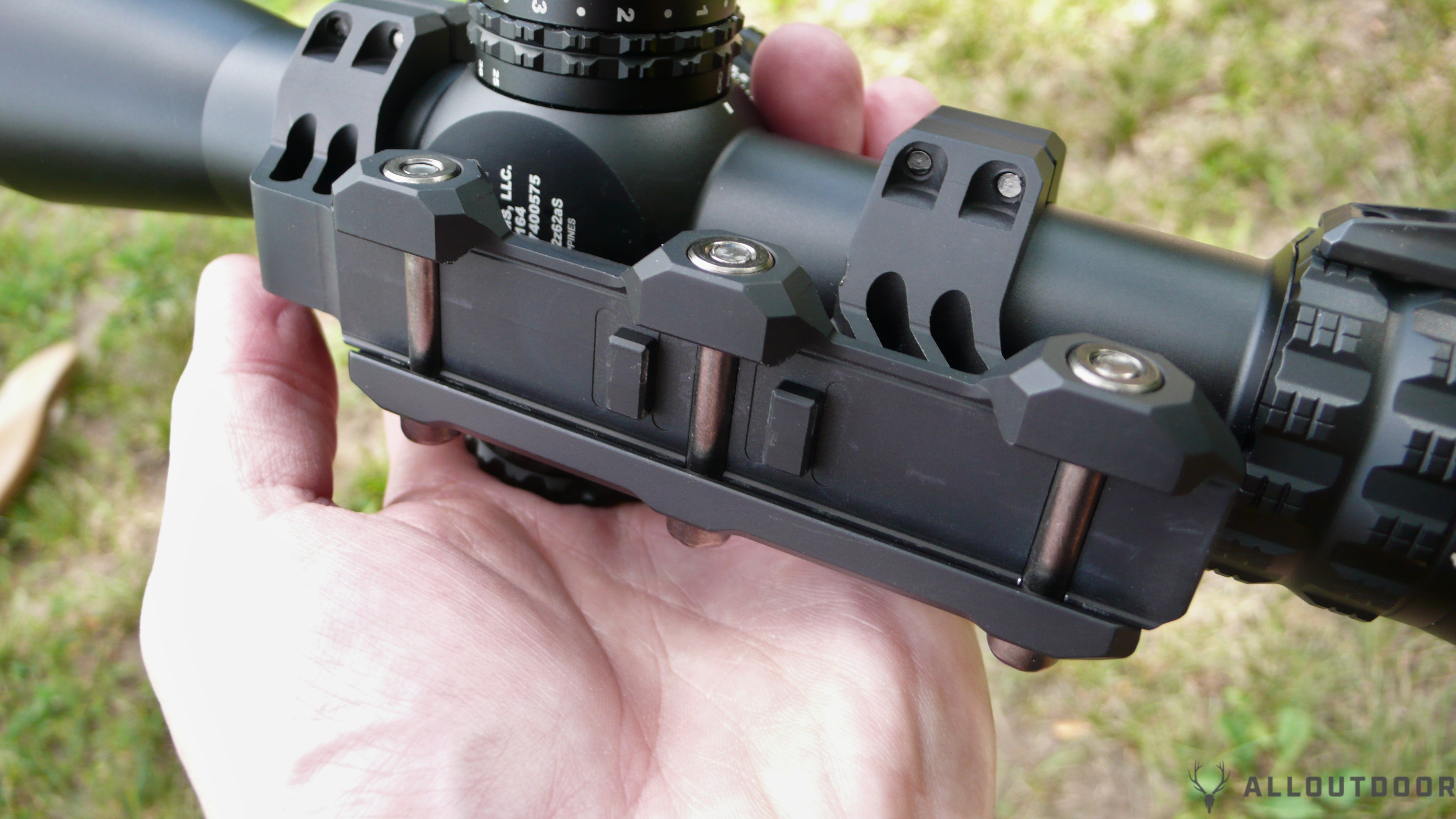
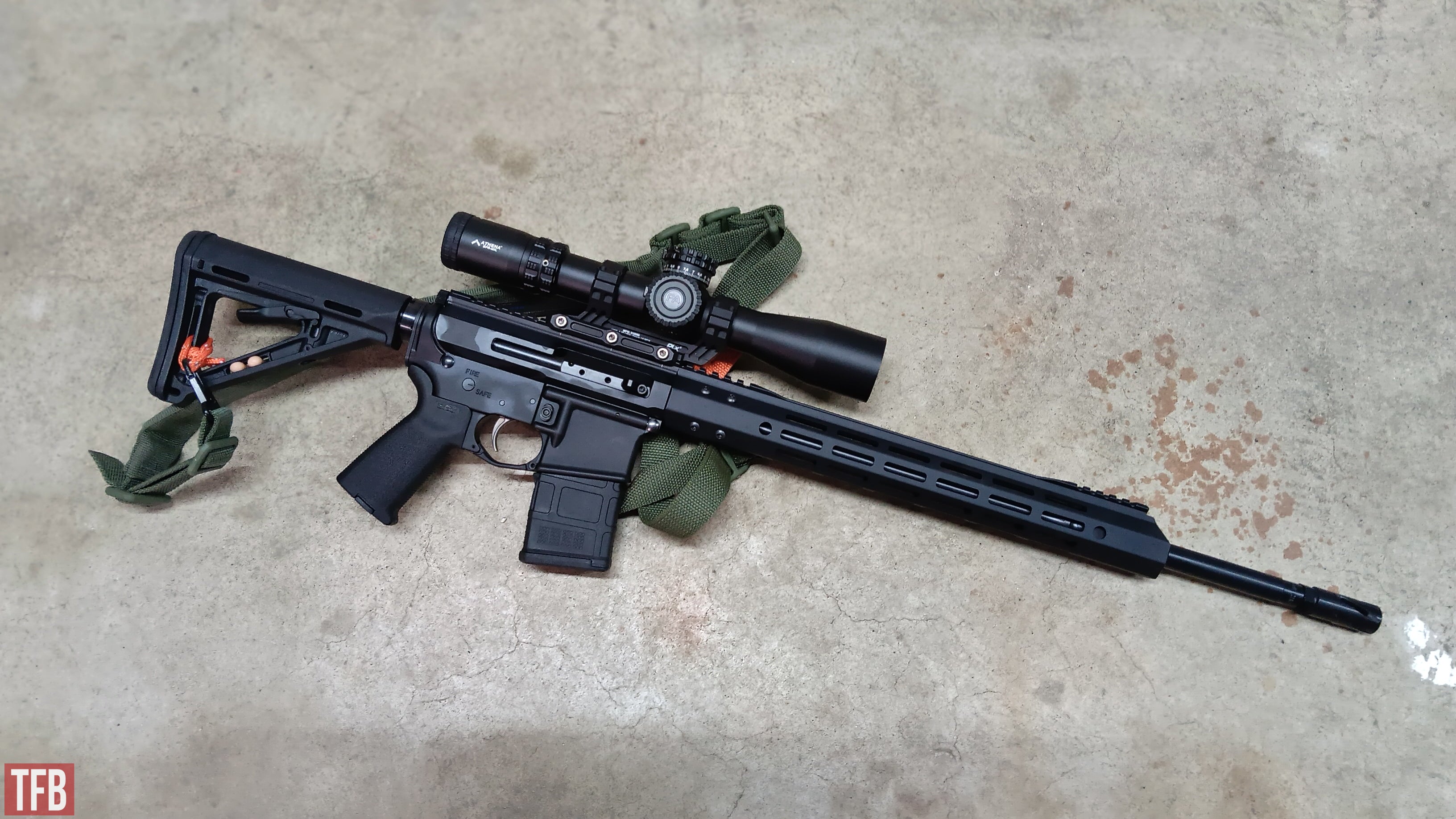
Features:
- 3-18x Magnification
- 44mm objective
- 3.5″ of eye relief
- 34mm main tube
- 180 MOA Elevation adjustment
- High strength one-piece 6061-T6 aluminum body
- Compact design is 13.66″ long and weighs just 29.6 Oz
- Premium grade glass
- Patented turret mechanisms
- Steel-on-Steel precision adjustments
- Tactile and audible 1/10 MIL click value
- Locking turrets protect your zero
- Integrated return-to-zero
- AutoLive illuminated reticle
- Elevation Rotation Indicators
- Dovetail Magnification Levers (UML compatible)
- First Focal Plane ACSS Athena BPR MIL reticle
ZEROING PROCESS
The GLx 3-18x44mm rifle scope is set to the optical zero by the factory, but of course, you need to find the zero to that of your rifle’s point of impact (POI). Because the GLx 3-18x uses elevation and windage turrets that lock at each rotation, there’s a bit more going on inside the turret than most rifle scopes. There are detailed instructions in the provided manual, but in a nutshell, there’s a chance you may have to take the turret caps off and loosen the locking ring to make the full adjustment to get your zero set. I was within a click or two of having to go that far myself.
This really shouldn’t be a deal breaker, but just know that there may be an extra step or two compared to other scopes’ zeroing process. If you can follow instructions and turn an allen wrench, you’ll be fine. If you’re a shooter that has your gunsmith zero your rifle for you, just bring the instruction booklet for them to follow.
RETICLE & RANGING
The ACSS Athena BPR Mil reticle built into the Primary Arms GLx 3-18x44mm scope involves the standard crosshair, as well as a MRAD and Christmas tree style aiming points below the crosshair. I personally prefer this style, but I know it’s not everyone’s cup of tea. A chief complaint I hear from people that don’t like the Christmas tree reticles is that they’re distracting. While I can’t argue what is or is not distracting to others, this style of aiming references isn’t just there for looking cool… or tacticool. It’s merely an aid for eyeing quick shots using your known data, rather than using both turrets by dialing to your ballistic data.
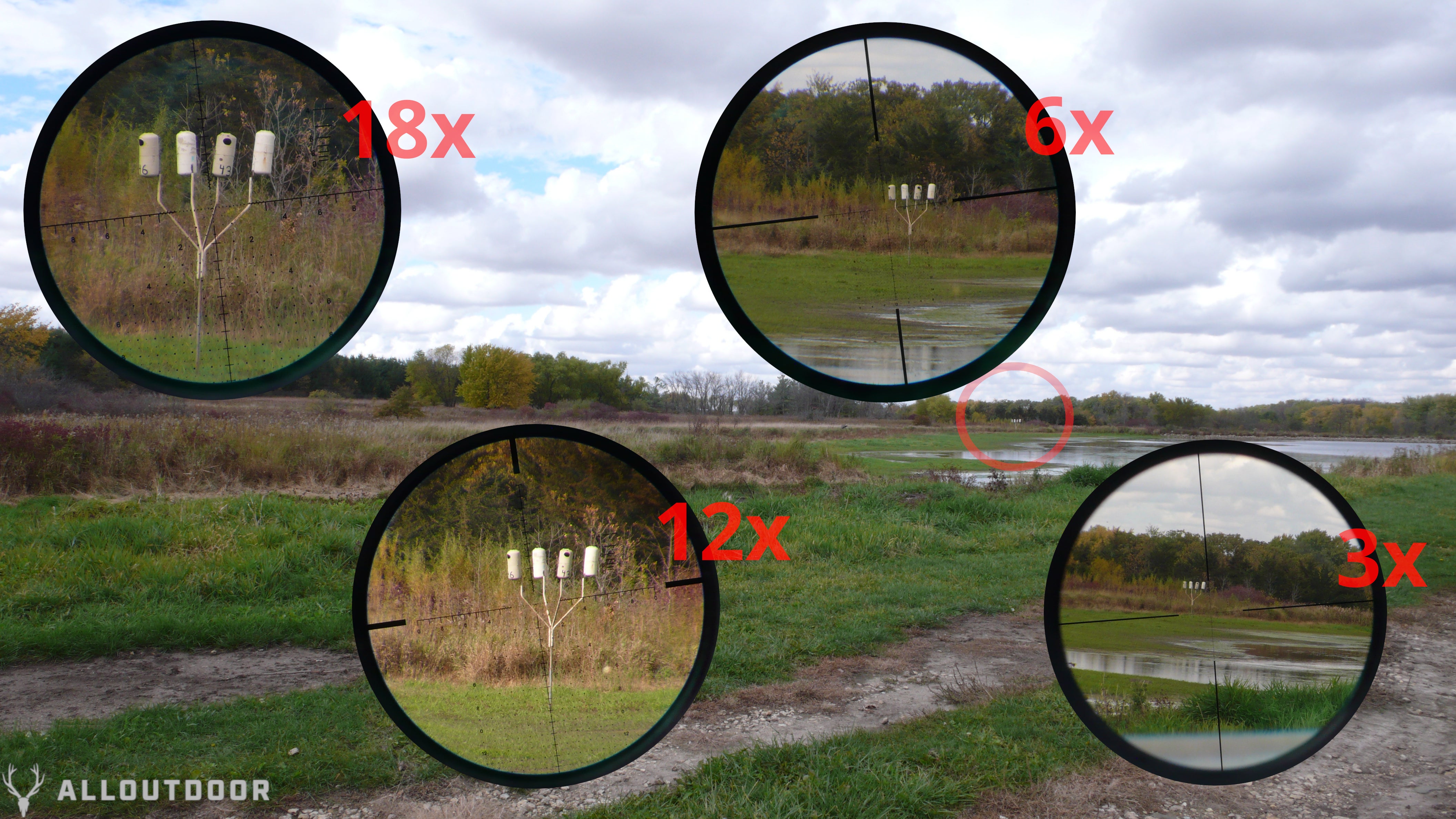
The Ranging Ladder in the upper right quadrant of the ACSS Athena BPR reticle is set for ranging 5 foot, 10 inch tall targets, and each step of the ladder represents 18 inch widths at the indicated ranges. The manual states to place the base of the target on the right crosshair line, and then estimate the size by lining up the top of the target to the nearest corresponding ranging line. The nearest ranging line starts with “4” for 400 yards, going up to 1000 yards in increments of one hundred.
Since the Christmas tree is designed with MIL radians, you can also range your targets using the lower half of the reticle as well by using a formula to convert the measurement to the number of yards.
- INCHES x 27.8 ÷ MILS = RANGE IN YARDS
- CM x 10 ÷ MILS = RANGE IN METERS
I found that illuminated reticle of the GLx 3-18x was quite helpful against dark or highly shadowed backdrops. Generally, the unlit reticle works great on paper targets, but before I mounted it the rifle, I glassed various woodland and urban scenes, and the illumination helped a good deal in differentiating the reticle from my “targets” even during the day.
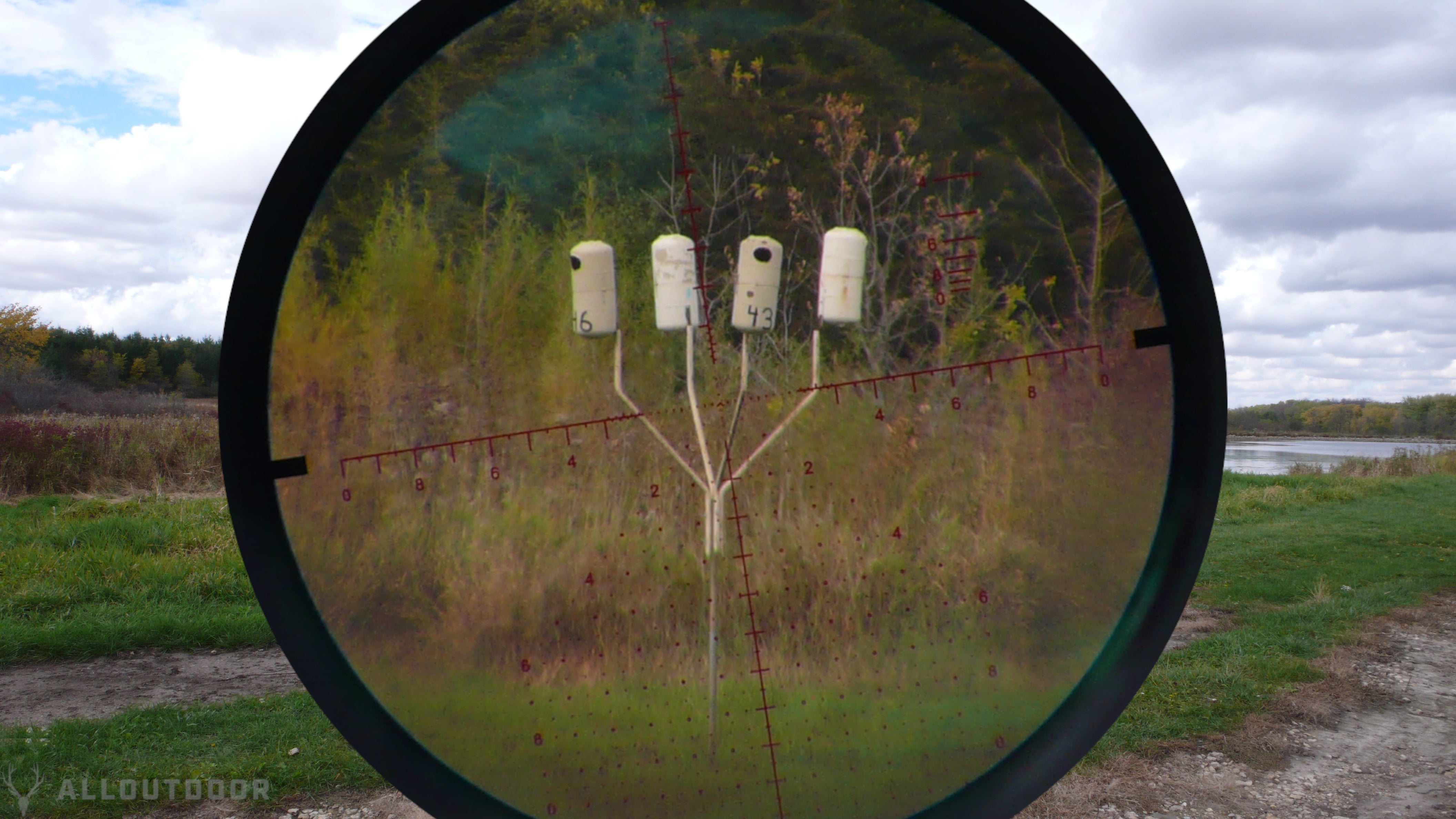
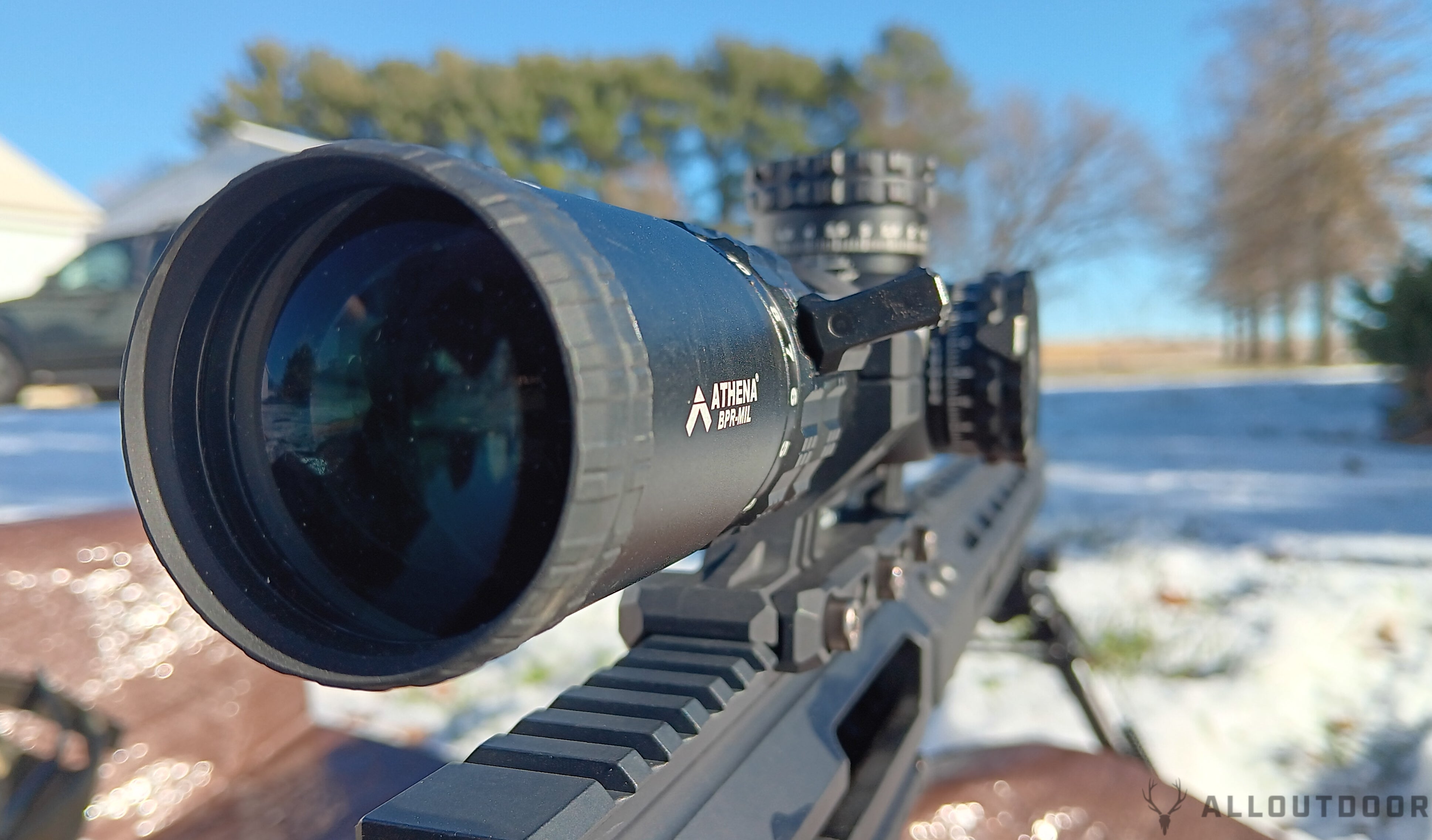
RANGE TIME
The Primary Arms GLx 3-18x44mm rifle scope performed great during my time with it. As is typical with most scopes, the 18 power setting had a pretty tiny eyebox, but it still seemed more usable than other models I’ve reviewed. I was generally shooting 1 to 1.5 MOA groups, which I attribute more to the rifle, and me doing my part, but the scope helped me get there. Just for fun, I played a short game of Battleship at 100 yards and nearly sunk a cruiser and an aircraft carrier with my last groups on a couple of range trips.
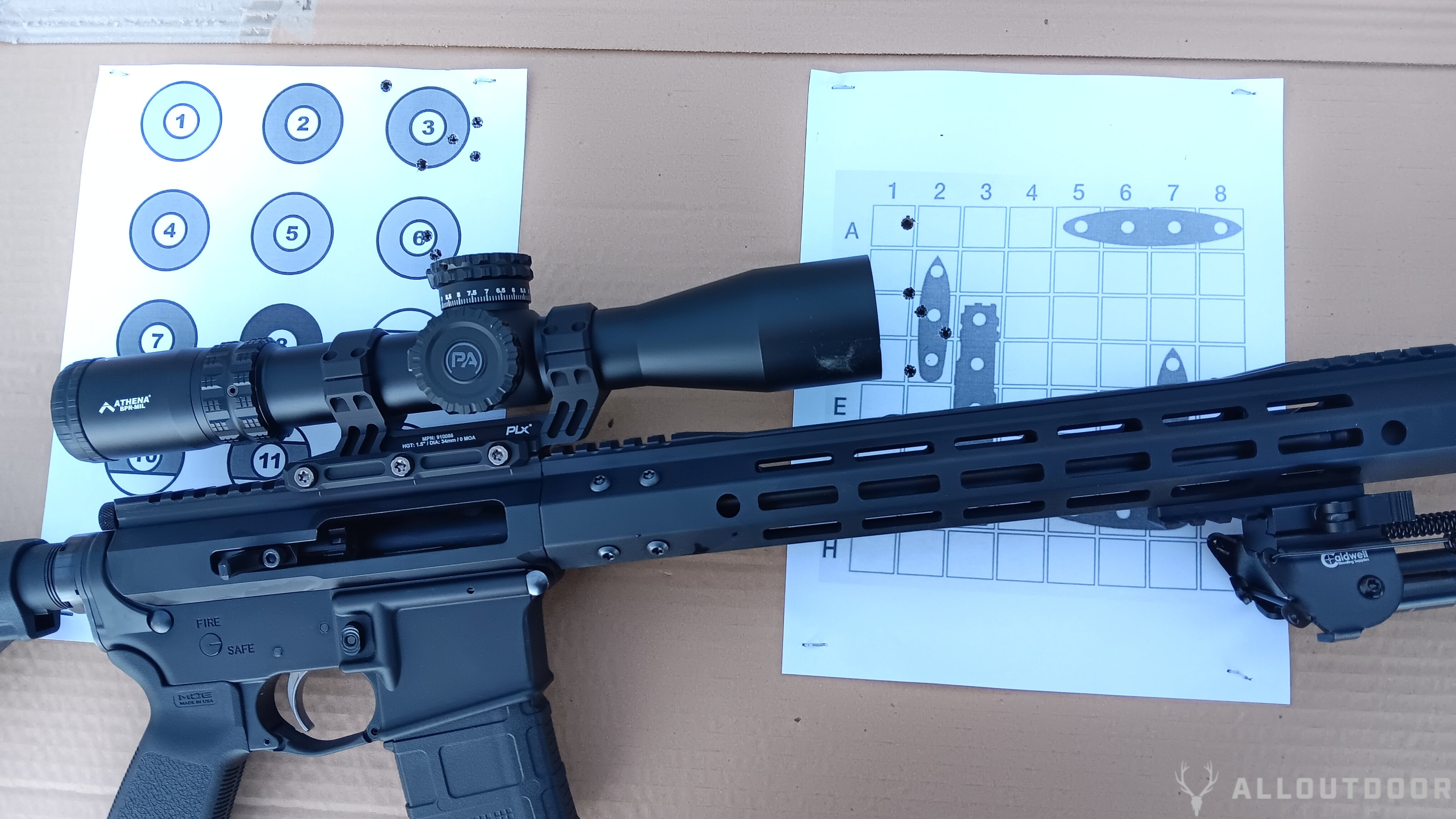
In the photo above, you can also see my turret tracking test on the number 3 pool ball. I had shot a three round group to check my zero, made some adjustments as seen on the 6 ball, then dialed in for my 500 yard target. Afterward, I dialed back down but didn’t make it far enough which led to the high-left hit above the 3 ball. I corrected to my actual prior zero and shot just outside the inner circle.
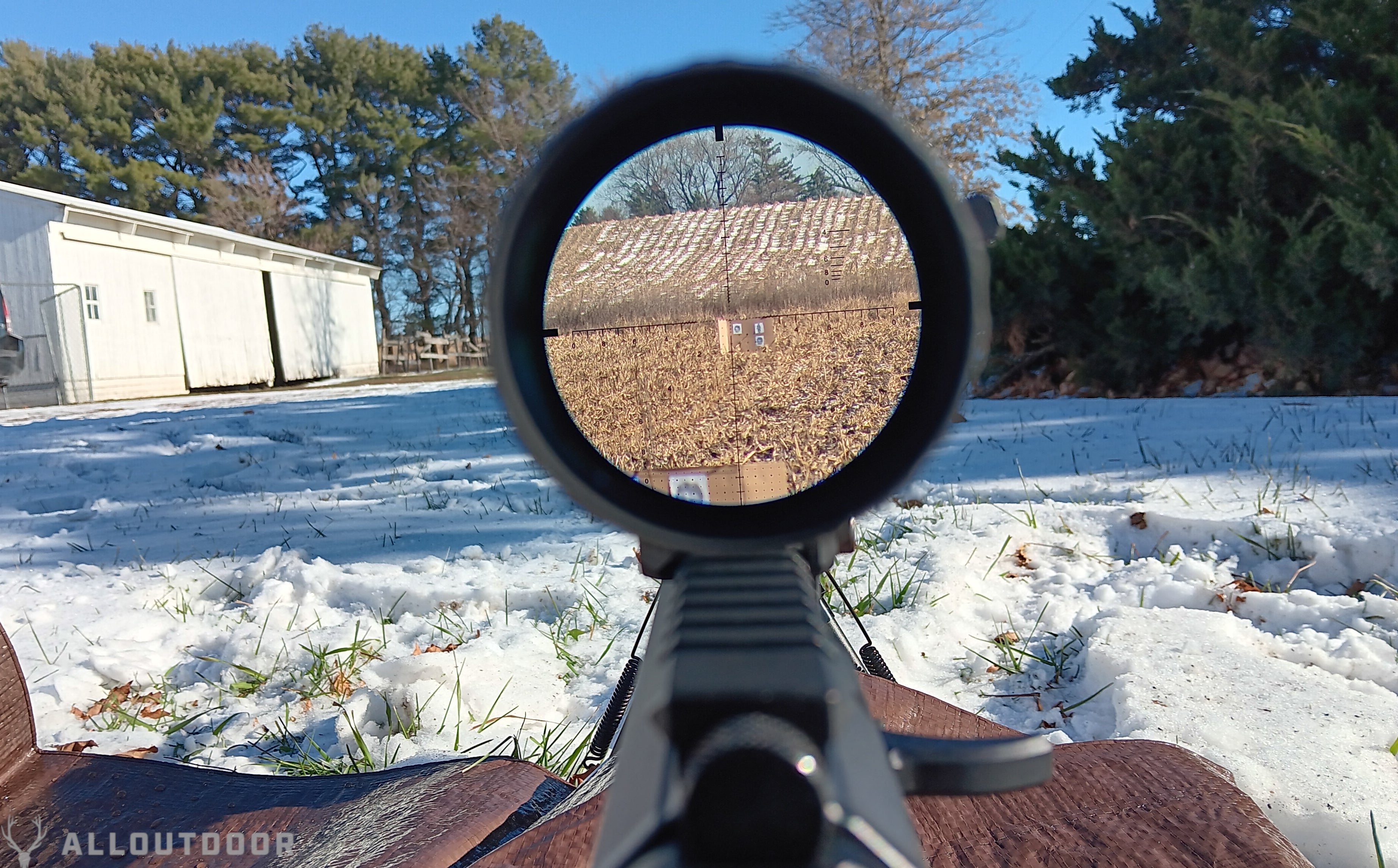
Below, you can see my results at 500 yards. The shots highlighted in blue was my first five round group, while the shots highlighted in red was my group after correcting my data. I must have miscounted during my last five though since I only had four shots present when I checked my target. I will also say that it seemed hilariously cartoonish to have all of my rounds just missing all around the head.
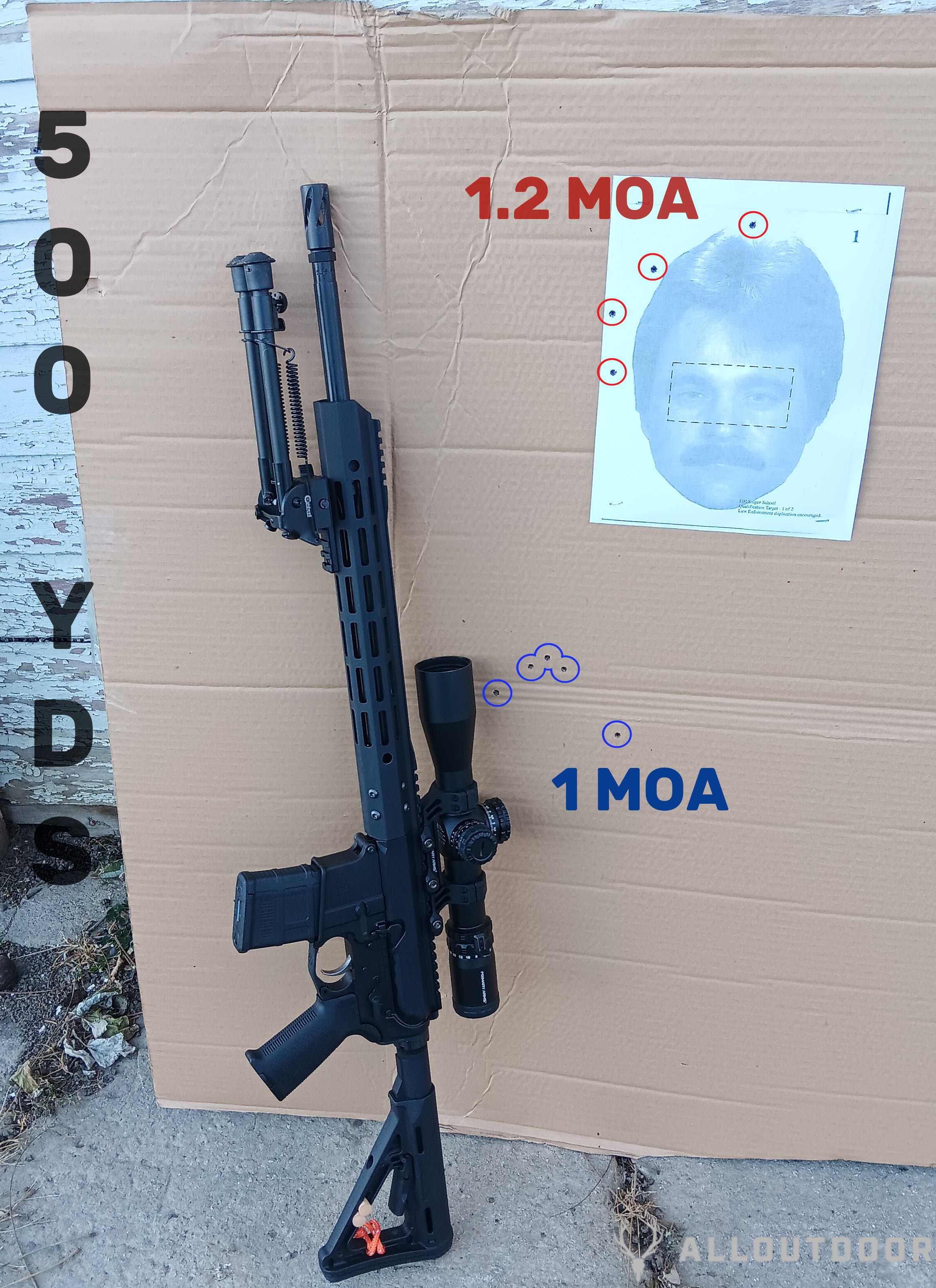
During one range session, I happened to be zoned into the scope on my target at 200 yards, when a deer walked right in front of my target. My finger was on the trigger prepping for my next shot. However, I immediately let off the trigger, which meant that he got to live, and I didn’t have to make an awkward call to the local DNR officer. The following photo was taken after I cleared the gun.
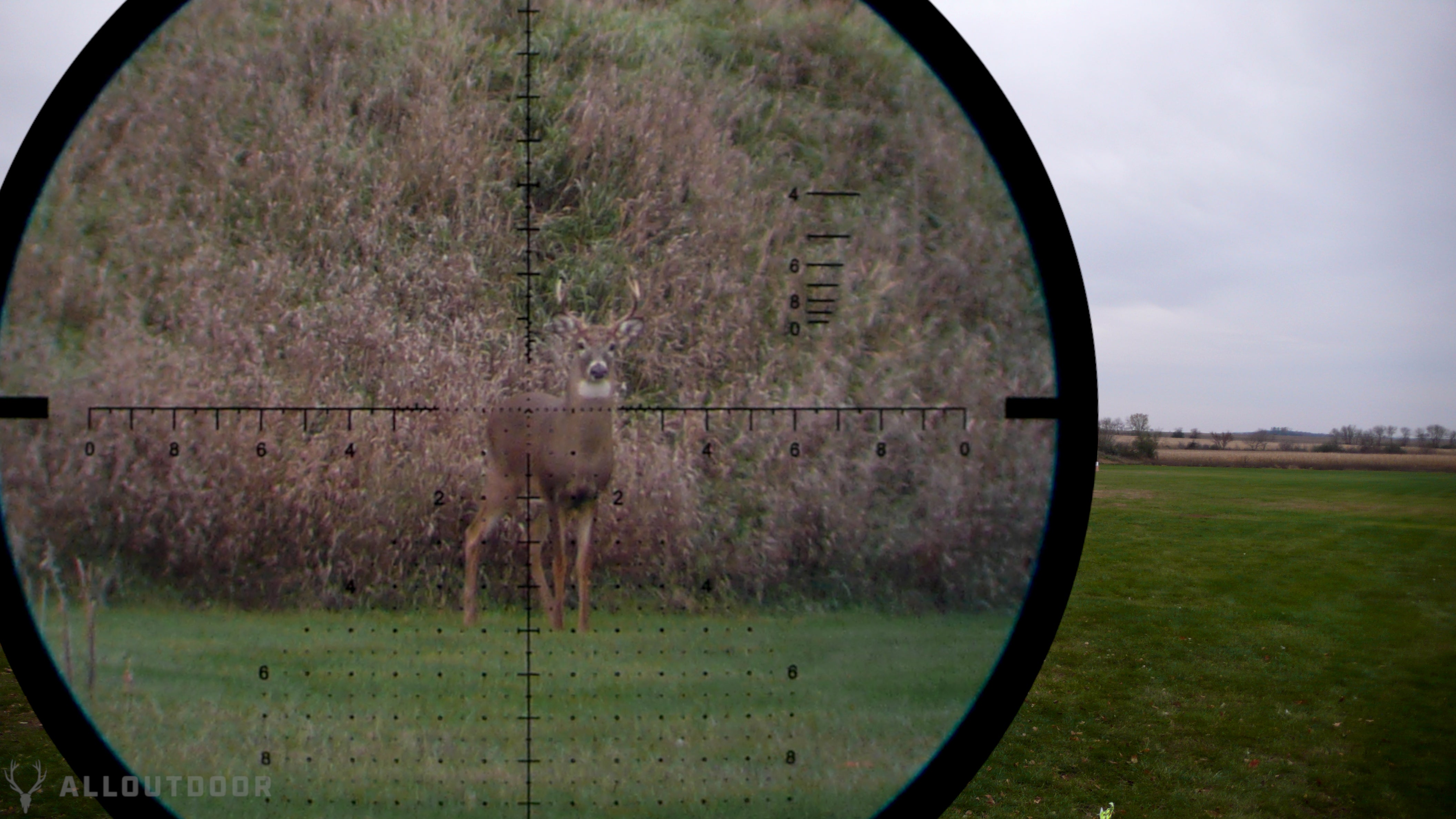
Primary Arms’ GLx throw lever made changing magnifications quick and easy. The magnification ring is a bit stiff, so it helped to have a bit of leverage on it. The lever is also removable though if you prefer sleeker optics.
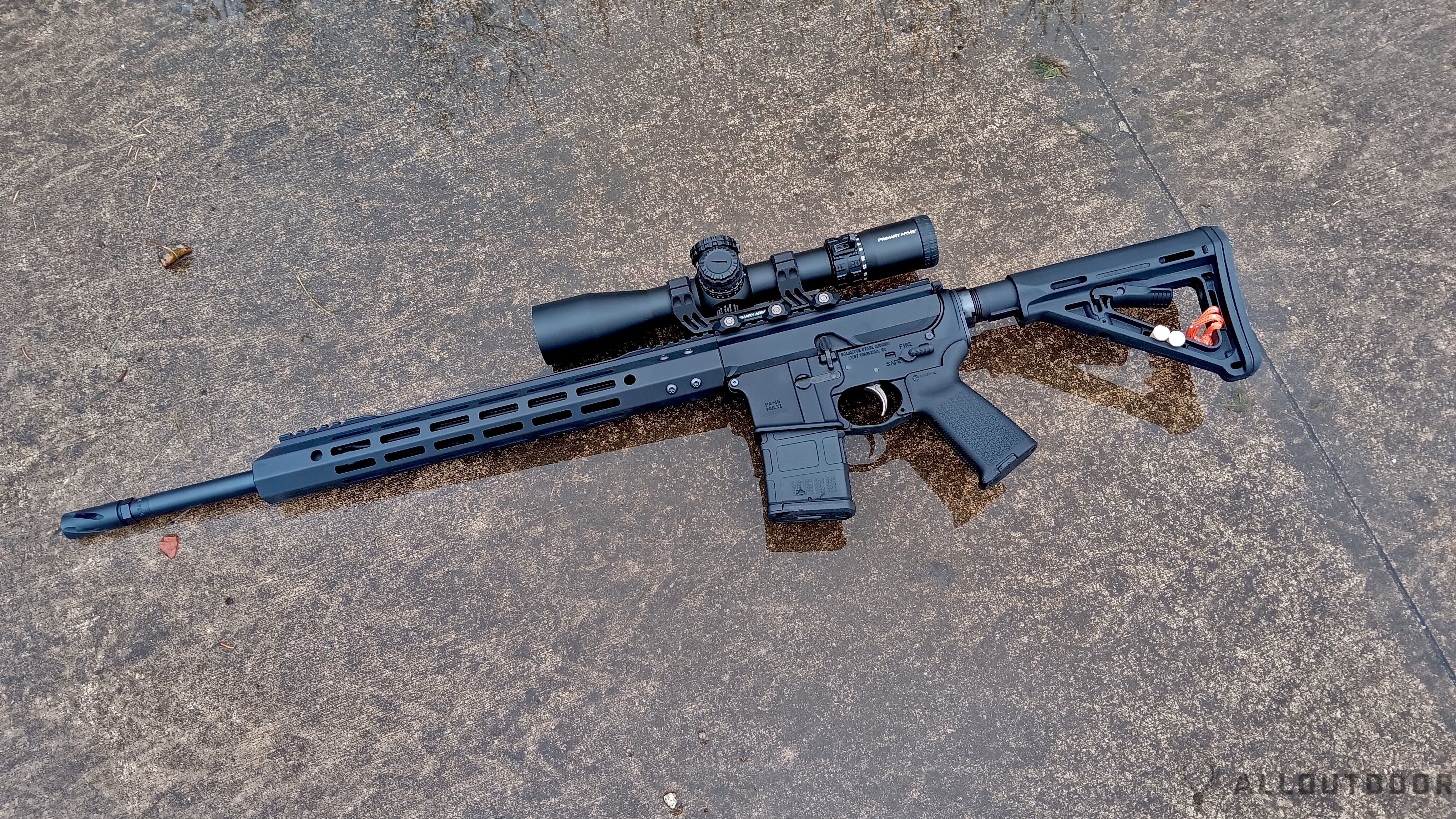
FINAL THOUGHTS
The GLx 3-18x44mm FFP with the illuminated MIL reticle was a treat to shoot with. My only complaint is that the turrets may have to be fiddled with more than other scopes during zeroing, but every other aspect worked great, internally and externally. The glass was crisp and the reticle and ranging options gives plenty of redundancy in the field. I really like the practicality of the 3-18x magnification from near to mid-range target shooting, hunting, competition, and designated marksman points of view, which covers quite a host of practical shooting. The GLx 3-18x44mm scope is listed at $749.99, which you can find HERE for more info or ordering. You can also visit PrimaryArms.com to see the wide variety of other scopes and products they offer.
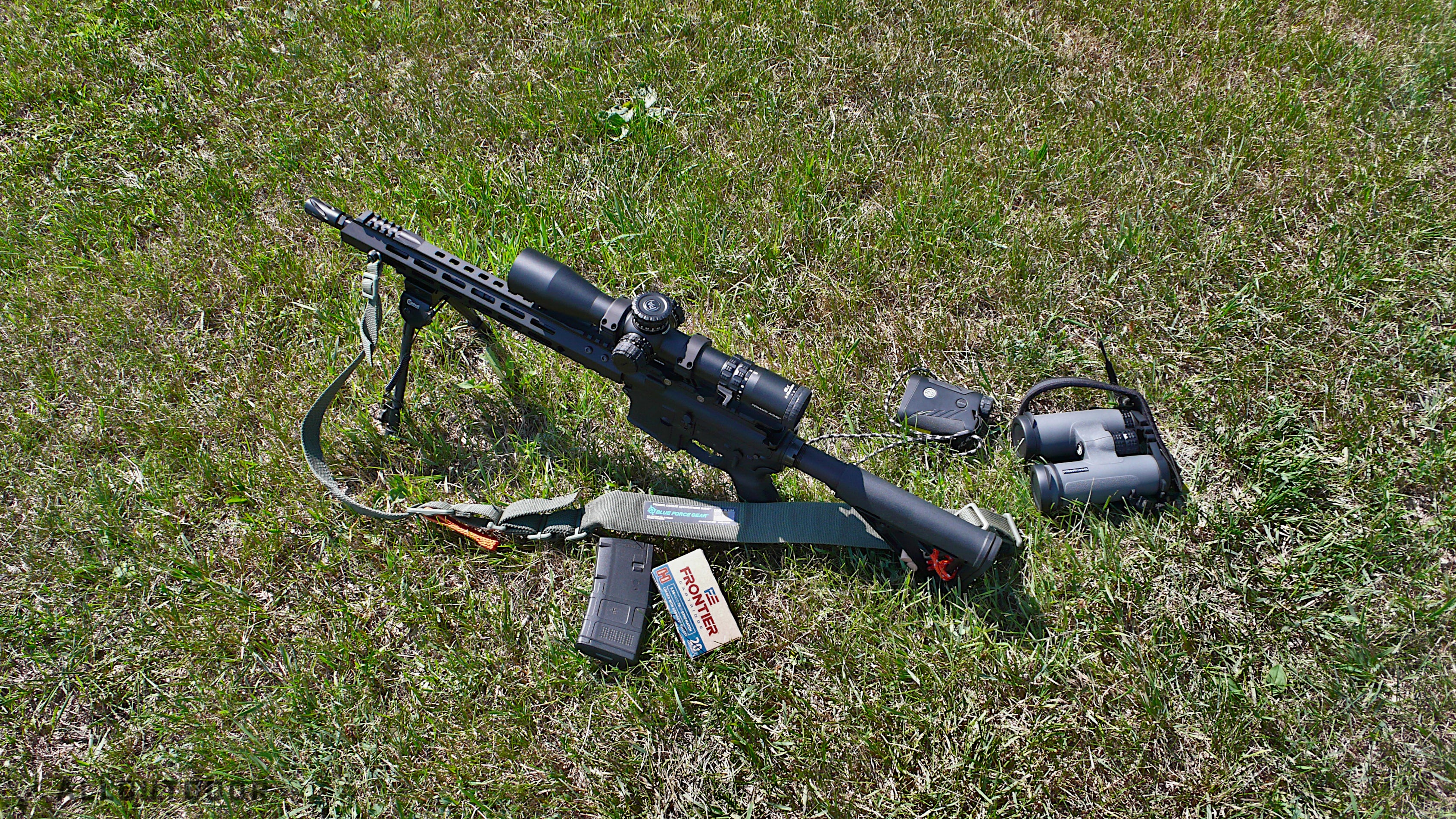
I asked Primary Arms about why they went with the 44mm objective lens over the more common 50mm lens. They said that it was to keep the weight of the optic down, and to give bolt action shooters the ability to mount the scope lower to the bore. The mount I tested didn’t set lower on my AR-15, but that certainly dind’t hinder my ability with it. What do you think about the Primary Arms GLx 3-18x44mm rifle scope? If you’ve already been using one, how has your experience been?
The post AO Review: Primary Arms GLx 3-18x44mm Rifle Scope – FFP IR MIL appeared first on AllOutdoor.com.


